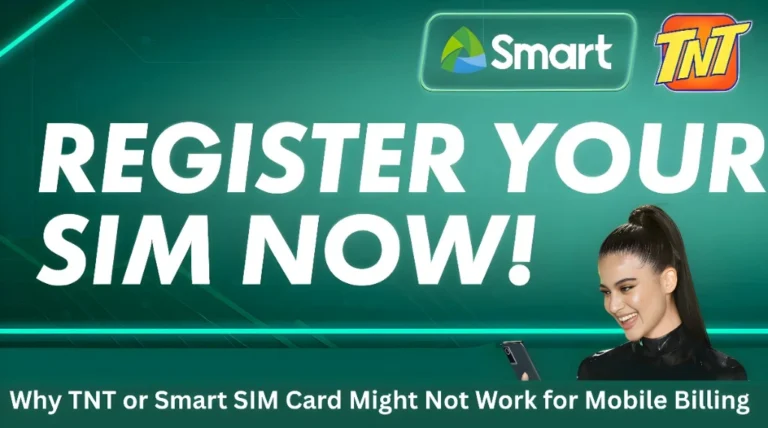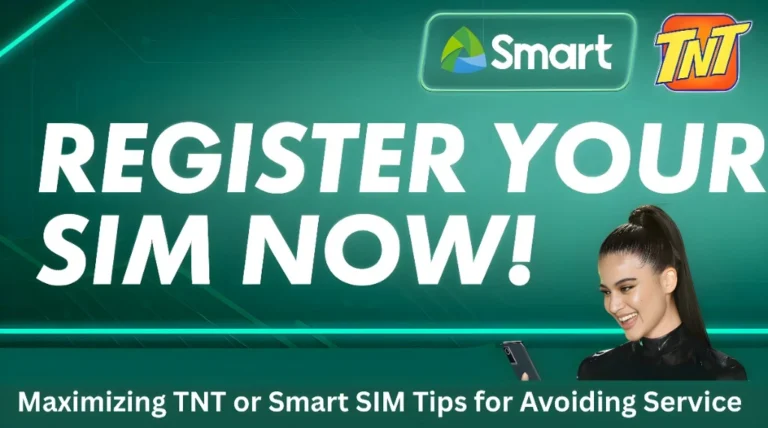You Need to Know Data Throttling on TNT and Smart SIM Cards
You Need to Know Data Throttling on TNT and Smart SIM Cards If you’ve ever experienced sudden slowdowns in your mobile data speed, especially after heavy usage, you might have encountered data throttling. This practice, common among mobile network providers like TNT and Smart, can significantly affect your browsing, streaming, and gaming experiences. Let’s dive deep into what data throttling is, why it happens, and how you can manage it effectively.
What Is Data Throttling and How Does It Affect You?
Data throttling is when your mobile provider intentionally reduces your internet speed after a certain amount of data usage. It can happen on both TNT and Smart SIM cards, affecting everything from browsing to streaming. While it might sound like a minor inconvenience, it can slow down your mobile experience to a crawl, especially if you’re streaming videos or playing online games.
Why Do TNT and Smart Throttle Data?
You may be wondering: Why do providers like TNT and Smart slow down my data? Here are the main reasons
Wondering if you’re being throttled? Here are some key signs
Fair Usage Policy (FUP): Providers often limit data speeds to ensure that no one user uses up all the network bandwidth. This policy is designed to give all users a fair share of the available resources.
Network Congestion: During busy times (like evening hours when many people are online), providers may throttle speeds to keep the network stable for everyone.
Plan Restrictions: Even if a plan is marketed as “unlimited,” it may come with hidden speed limitations after a certain data threshold is reached.
How to Spot Data Throttling on Your SIM Card
Slow Streaming: If YouTube, Netflix, or other streaming services buffer or play in low quality after you’ve used up a lot of data, throttling might be the cause.
Laggy Gaming: Online games that constantly freeze or lag could also be a sign of slowed data speeds due to throttling.
Slow Downloads: Large file downloads or updates taking much longer than usual? Throttling could be at play.
Unreliable Speed Tests: If your speed test results are significantly lower than expected, especially after heavy data use, throttling may be the culprit.
How to Manage and Reduce Data Throttling
Monitor Your Data Usage: Keep track of your data consumption using apps provided by TNT or Smart, or third-party data usage trackers.
Switch to Wi-Fi: Whenever possible, use Wi-Fi for data-heavy activities like watching videos, downloading apps, or large files. It saves your mobile data for when you really need it.
Upgrade Your Plan: If you often hit your data cap, consider switching to a higher plan with more data or one with “truly unlimited” data that doesn’t throttle after a set limit.
Contact Customer Support: If you suspect throttling is happening too early or unjustifiably, reach out to customer support for clarification and possibly ask for a better plan or a solution.
What Can You Do If Your Plan Doesn’t Meet Your Needs?
Upgrade Your Data Plan: Look for a plan with higher data limits or unlimited options with no throttling.
Switch to a New Provider: If throttling continues to be a problem, compare other mobile providers and see if they offer better, faster, or more flexible plans.
Why is my data speed slower at certain times of the day?
It’s likely due to network congestion. Providers may throttle speeds during peak hours when many users are online.
How can I tell if I’m being throttled?
If your speeds drop suddenly, especially after reaching a data limit, you might be experiencing throttling. Try running a speed test to check.
Does TNT or Smart throttle data on all plans?
Most mobile providers, including TNT and Smart, have data throttling policies, especially once you exceed your plan’s data limit.
Can I prevent data throttling?
While you can’t completely prevent throttling, you can reduce its impact by monitoring data usage and using Wi-Fi whenever possible.
How can I improve my internet speed if I’m being throttled?
- Upgrading your plan to one with higher data limits or switching to a plan that doesn’t throttle after a certain amount of data is one solution.
Final Words
Experiencing throttling can be a major frustration, but knowing the reasons behind it and how to manage it can make your mobile experience much smoother. With a little bit of awareness and planning, you can keep your data speeds in check and avoid the most common pitfalls of throttling. Always check your data usage, switch to Wi-Fi when you can, and choose the best plan for your needs.







